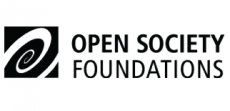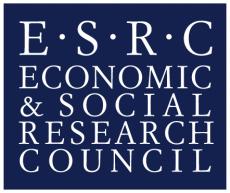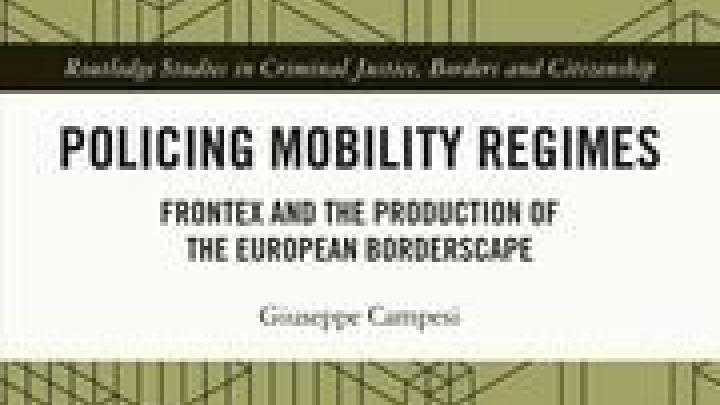Book Review: Human Trafficking: Trade for Sex, Labor, and Organs
Posted
Time to read
Post by Sanja Milivojevic. Sanja is a Senior Lecturer in Criminology at La Trobe, Melbourne, and Associate Director of Border Criminologies. Sanja publishes in English and Serbian on a range of topics, in particular borders and mobility, security technologies, surveillance and crime, gender and victimisation, and international criminal justice and human rights. Her latest book Border Policing and Security Technologies is published by Routledge (2019).
Review of Human Trafficking: Trade for Sex, Labor, and Organs, by Bandana Purkayastha and Farhan Navid Yousaf (Polity, 2018).

This book is a recent contribution to the burgeoning scholarship on trafficking that can assist in such quest. The book’s originality lies on taking a road less travelled, focusing on what the authors call trafficking as a continuum - where ‘one form of trafficking overlaps with and can be connected to other forms of trafficking’ (p. 2). Purkayastha and Yousaf, thus, take a position that a victim of sex trafficking might be made vulnerable by, and might indeed be victimised by another form of trafficking, such as trafficking for forced labour. The underlying premise is that the complexity of trafficking requires complex, non-linear answers to the problem. The authors suggest that the
‘disjuncture, between a potentially mobile population and a world of political restrictions on migrants’ mobility, as well as the growth of legal and illegal industries and networks that trade in human beings for exploitation, leads to the conditions that facilitate the growth of human trafficking’ (p. 7).
In answering the trafficking challenge, the authors draw on three key theoretical frameworks: intersectionality, forced migration, and human security. While certainly not novel, this non-linear approach is much needed in the contemporary anti-trafficking discourse, especially in times when the definitional muddle that conflates trafficking, forced labour and modern slavery is creating a headache for academics and policy-makers, and when scholars struggle to come to terms with the legacy of (now almost 20 years old) international anti-trafficking engagement.
The authors offer a robust and at times substantive engagement with some key developments in the counter-trafficking debate (such as definitional ambiguities, the focus on sex trafficking and the lack of focus on organ trafficking, and the notion of ‘rescuing’ victims from trafficking). Throughout the book they also offer a comprehensive review of the relevant literature, particularly in the area of feminist and migration scholars’ engagement with trafficking. This is a timely input, given the recent abundance of written work, both academic and activist-based, on the topic. Worth mentioning here (and deserving of praise), is the authors’ particular focus on the literature coming from the Global South, as these contributions have been mostly sidelined, if not neglected in the Anglo-centric counter-trafficking literature. The book also provides narratives (or ‘vignettes’) of victims/survivors of trafficking, a practice rare in the literature and encouraged by the international community. Such an approach should be both welcomed and reproduced in the literature in the future. Of significance is also Chapter 6, titled ‘Envisioning a Trafficking-Free World’, in which the authors pose important questions about the future engagements with the issue, especially when it comes to understanding multifaceted, non-linear nature of, and our current criminal justice-focused responses to the issue.
It is my impression, however, that the book could benefit from a more critical engagement with some key issues in the anti-trafficking discourse. One such issue is the ‘guesstimates’ – ambiguous and often unsubstantiated estimates of people believed to be victims of trafficking/slavery. While the authors provide a review of relevant literature pertinent to quantifying both cases and victims of trafficking, and while at the end of the book they offer a section on ‘Ongoing Debates and Unresolved Questions’, their evaluation of data, methodology and evidence in trafficking research and policy remains vague. Indeed, the book often reads as (albeit comprehensive) literature review of contemporary anti-trafficking scholarship and relevant national and international policy developments. More importantly, trafficking as a continuum while a novel concept remains somewhat underdeveloped in the book. I am also a bit surprised with the authors’ choice when it comes to the structure of the book, as the first three chapters focus on trafficking for the purpose of sexual exploitation, trafficking for the purpose of labour exploitation, and trafficking for removal of organs. I think the structure could reflect the key theme that the authors attempt to unpack in the book - trafficking as a continuum, rather than a set of separate exploitative practices. Finally, a reflection on the legacy of anti-trafficking movement, and the impact of counter-trafficking strategies on mobility and labour opportunities of a range of vulnerable populations (women, illegalised non-citizens, low-skilled labourers and the like) would also add to the overall value of the book.
Nevertheless, Human Trafficking: Trade for Sex, Labor, and Organs is an excellent read for those who are looking to unpack some fundamental complexities in a rather messy anti-trafficking world, and to get an initial grasp on a growing literature that looks at various forms of exploitation that fit under the trafficking umbrella. It provides the reader with a clear and unequivocal overview of relevant literature and policy developments, and as such is a welcome contribution to the growing trafficking literature.
Any comments about this post? Get in touch with us! Send us an email, or post a comment here or on Facebook. You can also tweet us.
__________
How to cite this blog post (Harvard style)
Milivojevic, S. (2019) Book Review: Human Trafficking: Trade for Sex, Labor, and Organs. Available at: https://www.law.ox.ac.uk/research-subject-groups/centre-criminology/centreborder-criminologies/blog/2019/05/book-review-human (Accessed [date])
Share
YOU MAY ALSO BE INTERESTED IN
With the support of

